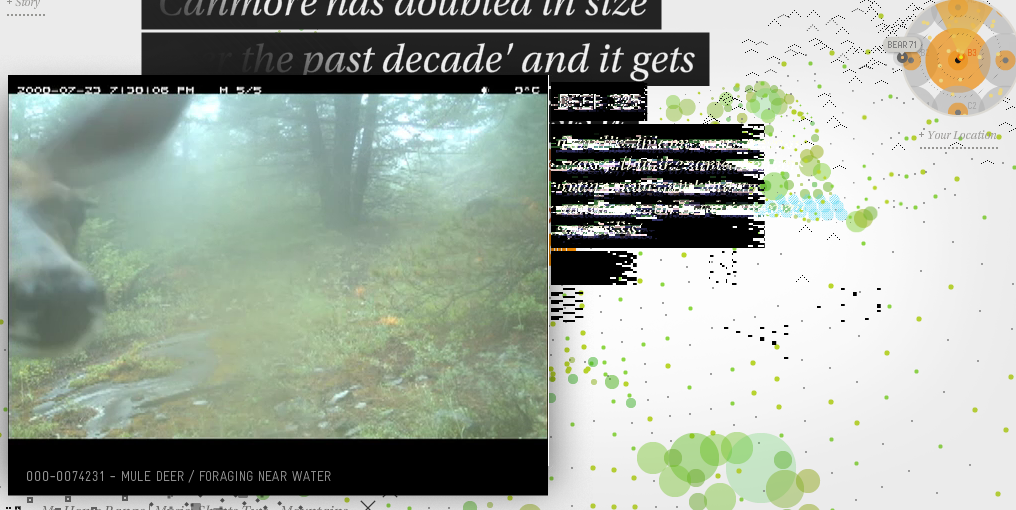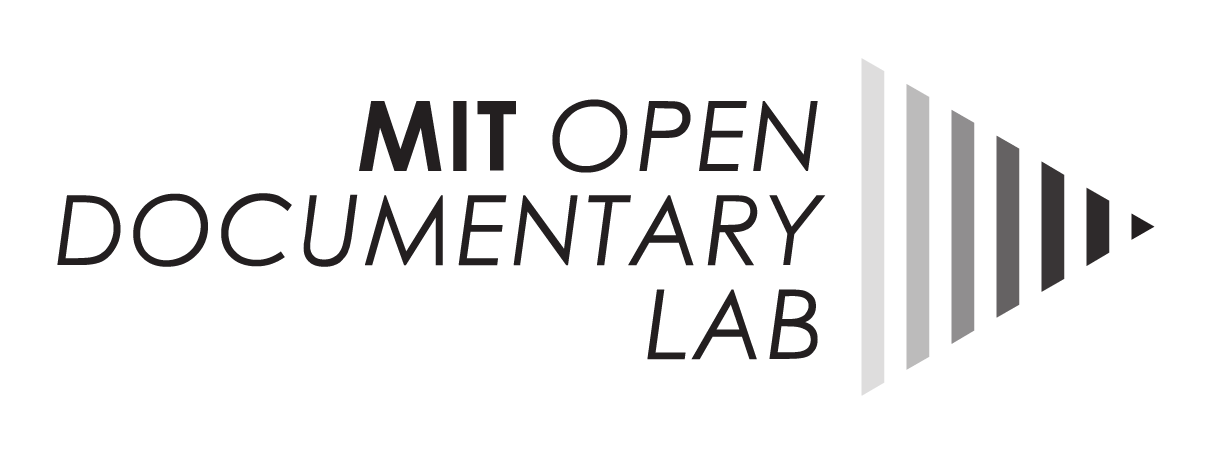
21 Feb Bear 71
Ever since last month’s Sundance festival, the National Film Board of Canada’s Bear 71 has been getting a huge amount of well-deserved press. The interactive documentary project, developed by Jeremy Mendes and Leanne Allison with interactive firm Jam3, follows a grizzly, the titular “Bear 71,” through Alberta’s Banff National Park. The piece begins with the initial capture of the bear, followed by her tagging and release into the wild. Because of this act—evidently traumatic for the animal—site visitors can monitor the location and a video feed of the bear as she goes about her daily life. Visitors can also enjoy a more creative treatment of bear 71’s life, through narration (voiced by actress Mia Kirschner) from the perspective of the grizzly herself.
Site visitors can also follow a number of similarly tagged wildlife: eagles, wolves, and deer. Clicking on an animal will unlock a video feed as well as further information. Users are themselves tagged through their computer’s webcam, and their image will be available to any other user visiting the website at the same time (although this option can be denied).
At Sundance, the NFB, in coordination with filmmaker Lance Weiler, developed a Bear 71 installation. Trail maps were projected onto gallery walls, and users could use an iPad to select video from specific points all over the park.
Bear 71 Installation Walkthrough from National Film Board of Canada on Vimeo.
If any of you find yourself in the Salt Lake area, the Sundance Bear 71 installation is on view at the Utah Museum of Contemporary Art until May 19.
From my perspective, one of the most effective elements of the often affective Bear 71 was a simple title at the beginning: “This documentary is 20 minutes long.” One of the beauties of interactive docs is you don’t know how deep they go. This can become a frustration however, when you’re unsure if you should spend 5 minutes on the site, or 50. Bear 71 puts nicely circumscribed cap on the visit— if I don’t have a free 20 minutes now, I can come back when I do.
My background is in museum exhibition development and as good practice, we’d always try to give duration information to our visitors: “this video is 3 minutes,” (or 5 or 10) allowing them to plan their visit how they see fit. People are more likely to go into a gallery space to watch a video when they know how much time they are giving up. Even though Bear 71 is an interactive experience that could theoretically last for hours, the “20 minute” barometer—which corresponds to the narrated portion—is as a nice benchmark for users. I found it helpful, friendly, and it helped me structure my visit.
And, as a side note: if you’re into interactive documentary, chances are you’ve run across some of the National Film Board of Canada’s impressive list of projects (Highrise, Out My Window, and Welcome to Pine Point, just to name a few), but Co.Create just ran a fantastic profile of the NFB, which is arguably singlehandedly redefining the landscape of “Canadian film,” as well as interactive doc. To quote the article’s author Jeff Berr: how did a 73-year-old government agency… turn into a hotbed of film innovation?
Berr also does a great job of capturing the feeling of a good interactive documentary:
The difference between these interactive docs and traditional film is like comparing a museum experience using a floor map on your own instead of following a tour guide. Rather than being led by the hand through the story, you have the freedom to wander and make your way from start to finish at your own pace.
Posted by Katie Edgerton/MIT




